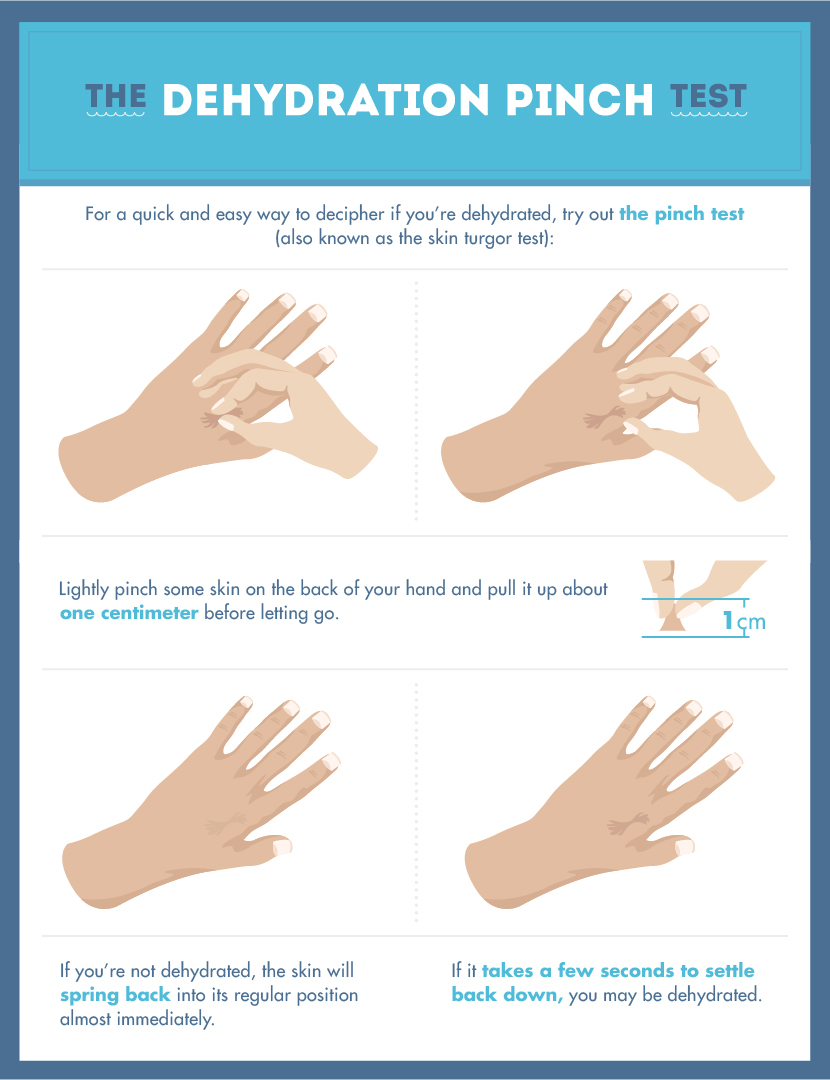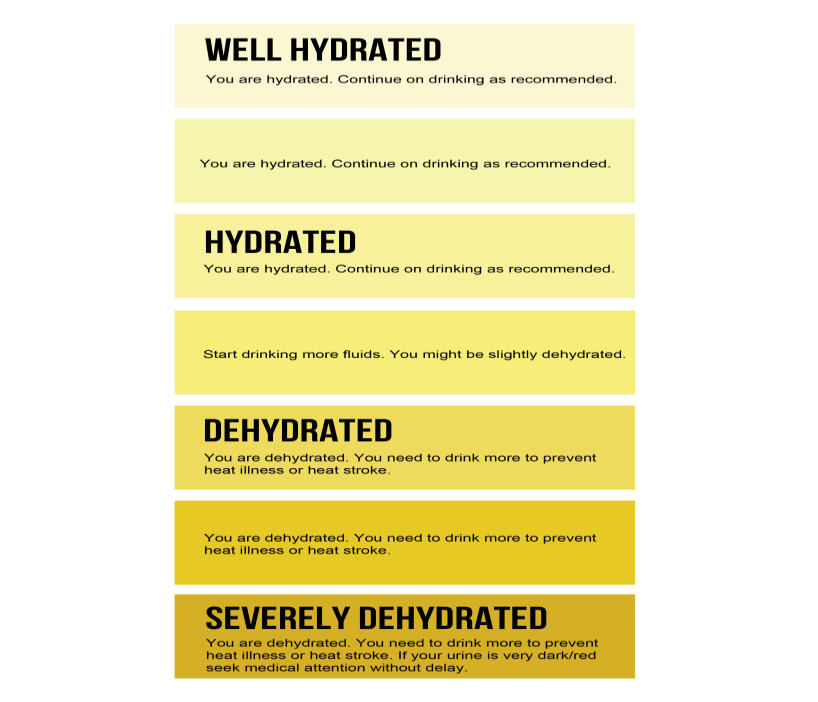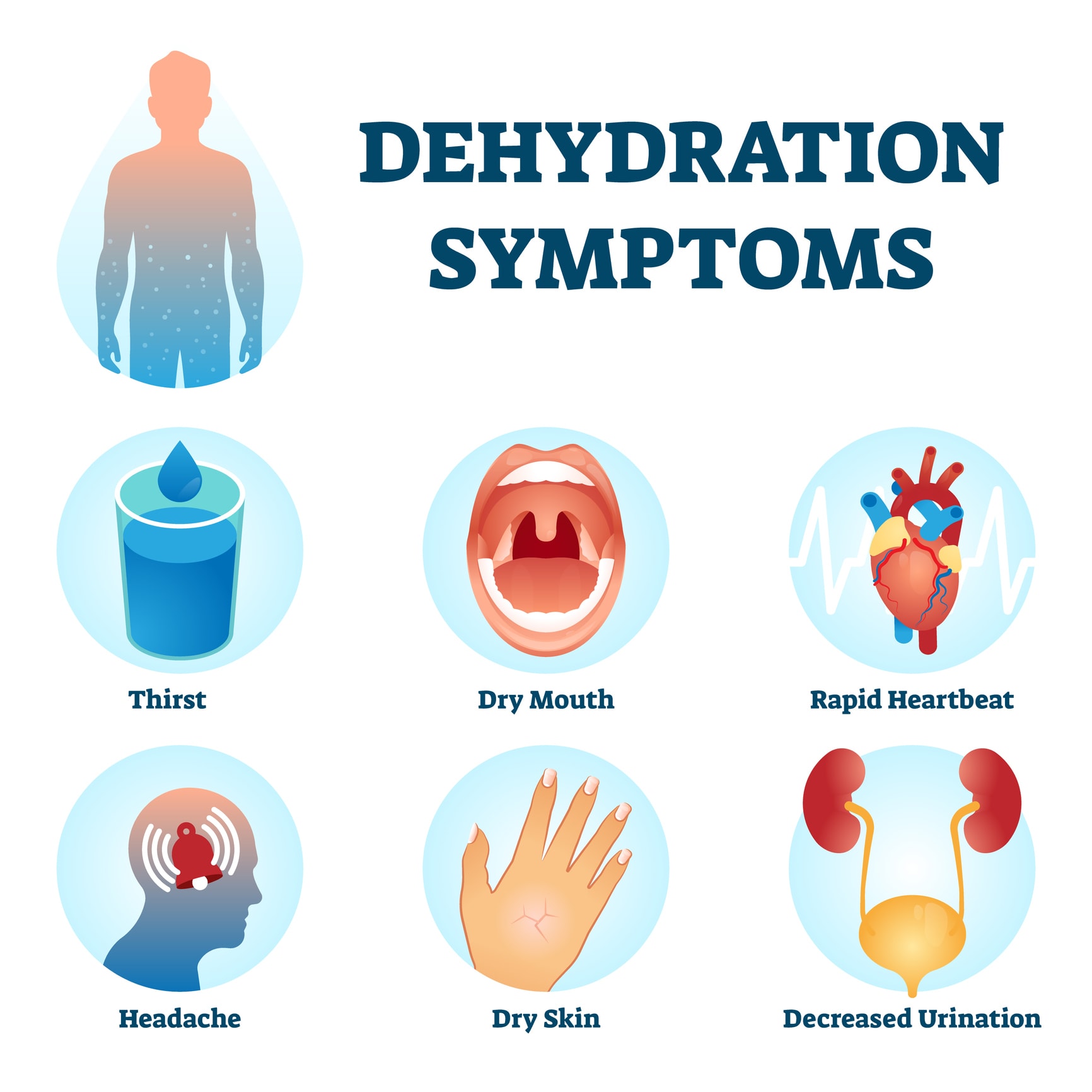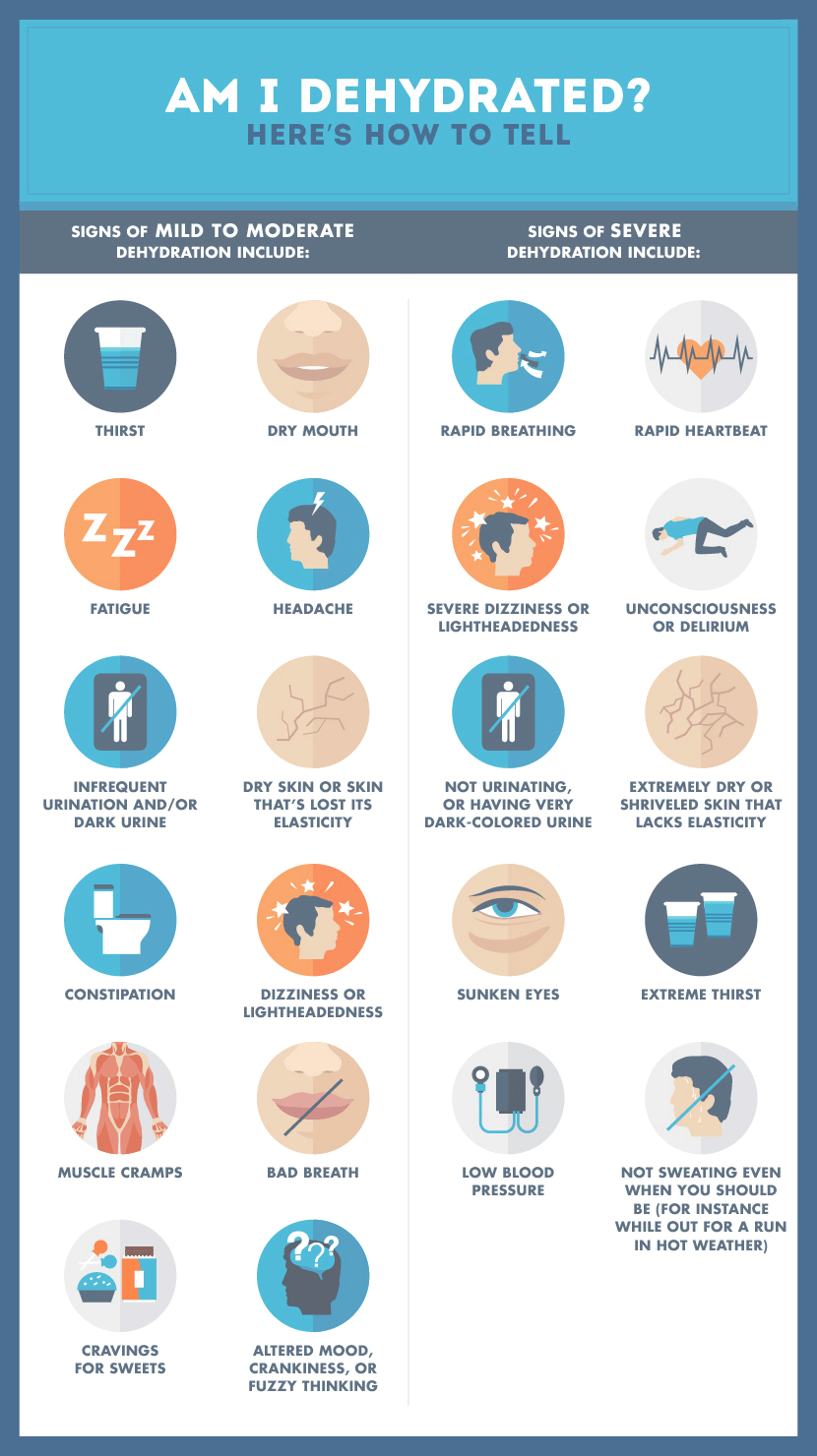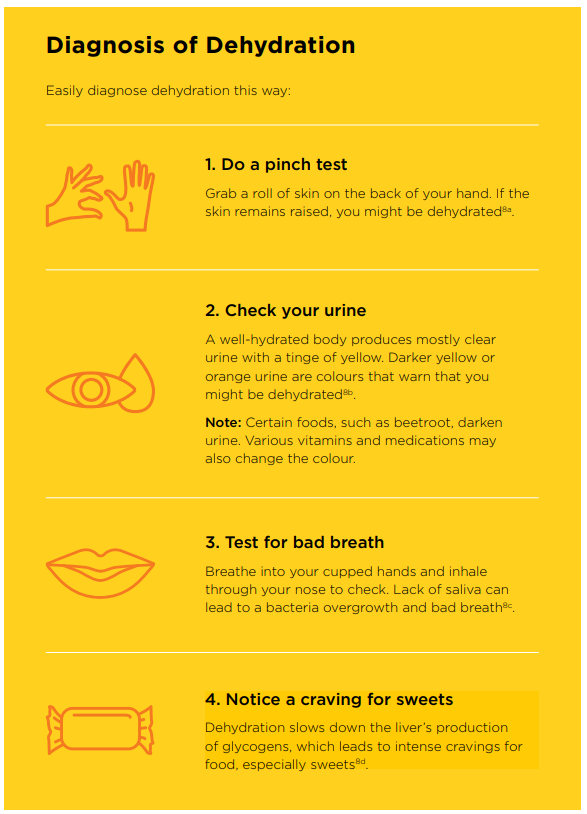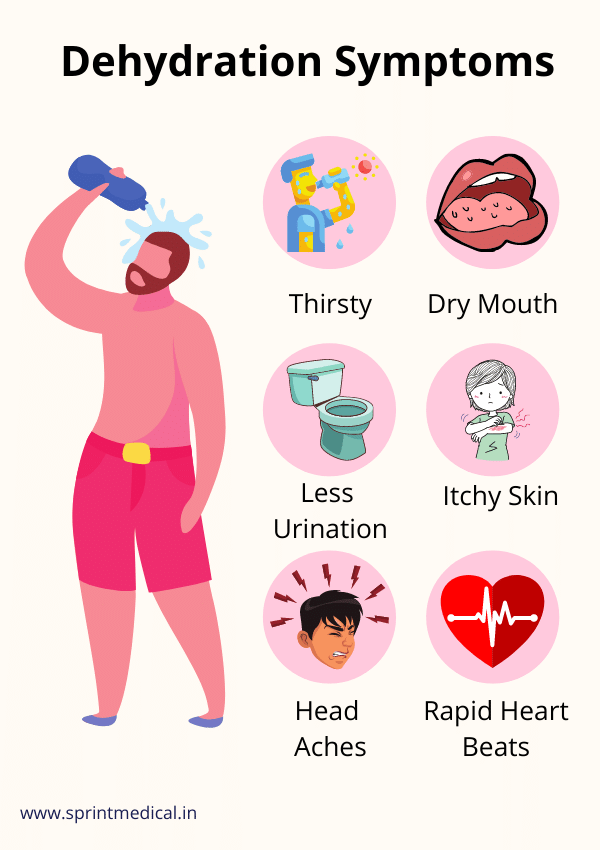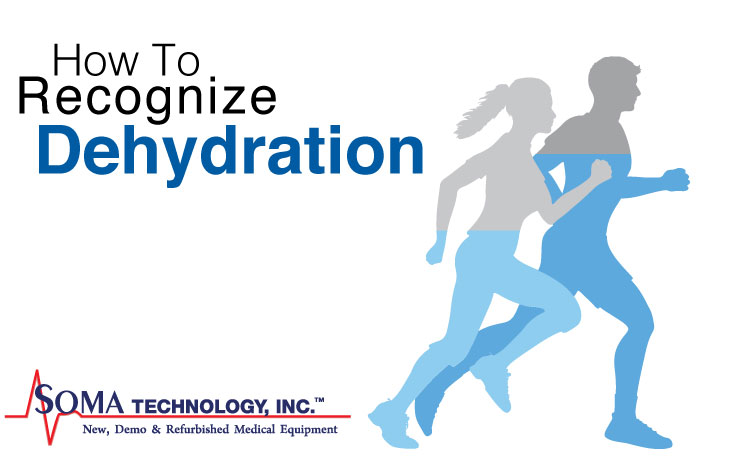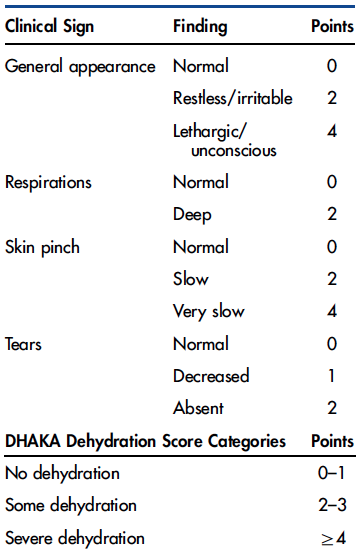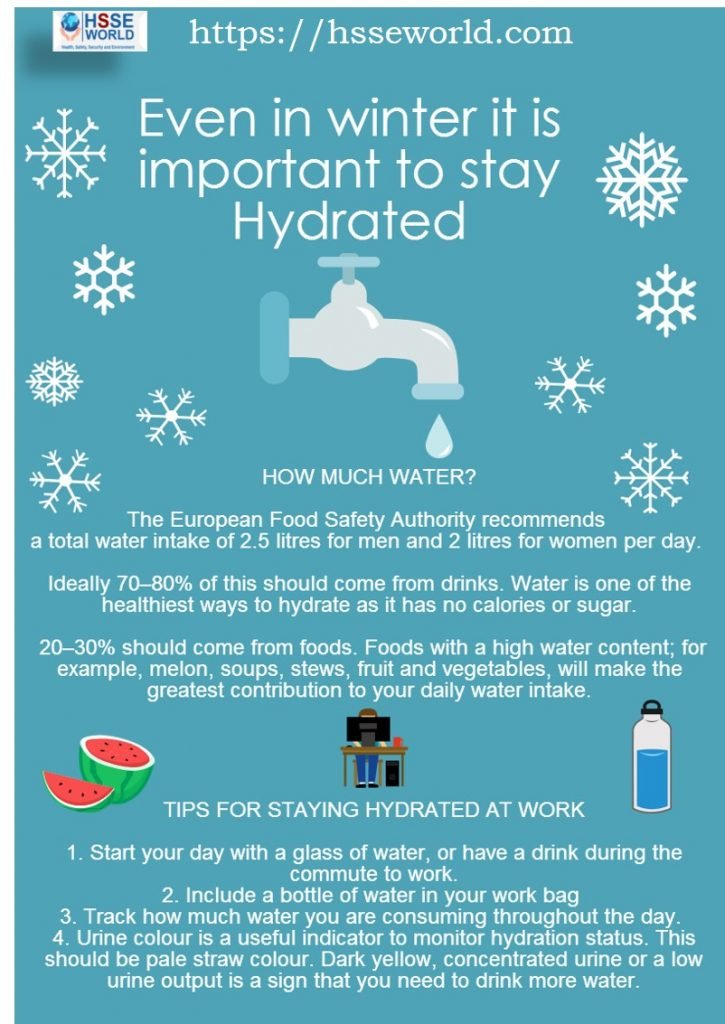Exemplary Tips About How To Detect Dehydration

In other words, when you feel.
How to detect dehydration. The causes of dehydration in a baby may be many. There are 3 things you can monitor together in the ‘real world’ to give you a good enough estimate of your hydration status: Mineral content (sodium, potassium) decreases with dehydration.
There are also a number of physical symptoms associated with dehydration. You may also need blood tests or a urine test. However, a 2015 study of older adults found that the presence or absence of dehydration.
The signs and symptoms of dehydration also may differ by age. They’ll check your blood pressure and heart rate. First, what it is not:.
Infant or young child dry mouth and tongue no tears when crying no wet diapers for three hours sunken. By combining the readings with skin. The technique most commonly used to measure dehydration is chemical analysis of sweat.
If you’re not urinating at all, it’s likely. How to detect signs of dehydration in the elderly. A sunken soft spot (fontanelle) on her head.
Your doctor may be able to diagnose dehydration with a physical exam. Few or no tears when she cries. It can be due to lack of nutrition or breastmilk, due to diarrhea, vomiting, excessive sweating, or fever.

